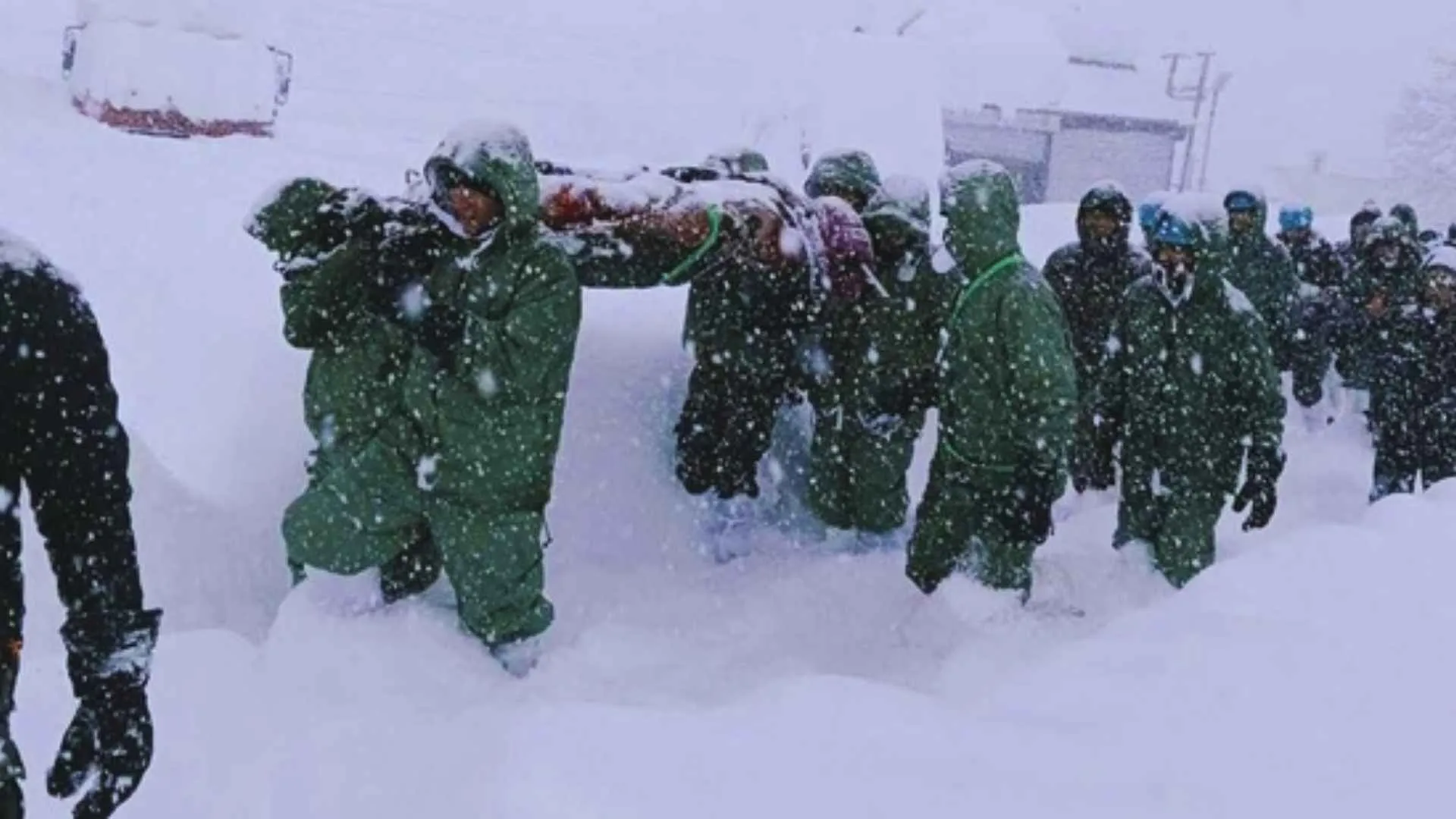A massive avalanche struck Mana village near Badrinath Dham in Uttarakhand’s Chamoli district on Friday, severely impacting a Border Roads Organisation (BRO) camp and trapping 55 workers under the snow. Rescue operations have led to the retrieval of 50 workers, but tragically, four have lost their lives, while the search for the remaining five continues. Despite adverse weather conditions, Chief Minister Pushkar Singh Dhami has assured that all possible efforts are being made to locate the missing individuals.
Avalanches, a formidable natural disaster in mountainous regions, involve the rapid descent of snow and ice down a slope, often with deadly consequences. They occur due to significant temperature fluctuations that destabilize the snowpack, making it prone to sudden collapse. Even minor disturbances, such as movement on unstable snow layers, can trigger an avalanche capable of immense destruction.
Types of Avalanches
Avalanches are categorized into different types based on their formation and movement:
- Loose Snow Avalanche: Initiates from a single point where snow is loosely packed, traveling at a slower speed.
- Snow Slab Avalanche: Involves a large, cohesive slab of snow breaking away, moving at speeds up to 100 km/h.
- Flow Avalanche: Also known as a wet snow avalanche, it occurs due to melting snow and is common in warmer seasons.
- Dust Avalanche: Triggered by fresh snowfall on steep slopes, forming a fast-moving wave of snow and air.
Causes and External Triggers
Avalanches can be caused by natural factors such as fresh snowfall, rising temperatures leading to snowmelt, and steep terrain with gradients exceeding 30 degrees. However, studies show that nearly 90% of avalanches result from external influences such as human and animal movement. Activities like off-piste skiing and snowboarding increase the risk of triggering avalanches, emphasizing the importance of awareness and precaution in avalanche-prone zones.
Dangers and Safety Measures
Avalanches can reach speeds of up to 200 km/h, leaving little time for escape. The primary dangers include suffocation, immobilization, and hypothermia. Victims buried under snow must be rescued within 15 minutes to increase survival chances. Hence, adventurers and workers in avalanche-prone areas must undergo specialized training, carry essential safety gear, and always be in groups to enhance survival chances.
The Uttarakhand disaster serves as a stark reminder of nature’s unpredictable force. While rescue efforts continue in Mana village, authorities stress the importance of preparedness and adherence to safety protocols in mountainous terrains prone to avalanches. As climate conditions continue to shift, mitigating avalanche risks remains a crucial challenge for disaster management agencies and local communities alike.
ALSO READ: Ramadan 2025 Begins In India: Leaders Extend Festive Greetings























